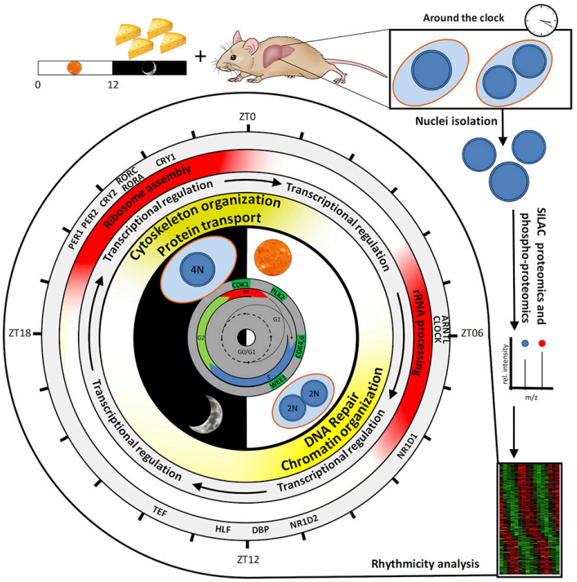Nuclear Analysis Services
Online InquiryThe cell of an organism is a highly ordered structure. The cell can be divided into different organelles or cellular regions depending on their spatial distribution and function, such as the nucleus, Golgi apparatus, endoplasmic reticulum, mitochondria, cytoplasm and cell membrane. As the largest and most important organelle of eukaryotic cells, the nucleus is not only a genetic container, but it plays an important role in coordinating transcription, replication and repair as well as integrating cellular parameters and environmental signals. For the study of plant cell nuclei, the study of protein/metabolite composition and dynamic changes can also help to deeply resolve the various molecular mechanisms during plant development and stress response, etc.
Creative Proteomics provides you with a professional nuclear multi-omics analysis platform. We have high-resolution mass spectrometry instruments and a professional bioinformatics team to provide you with nuclear proteomic, nuclear metabolomic and nuclear lipidomic analysis services. We aim to provide you with high-quality services to accelerate the progress of your project and open up new horizons.
The Nuclear Assays We Offer Include but Are Not Limited to:
1. Nucleus isolation and protein purification
2. Nuclear proteomics analysis
Depending on the purpose and strategy of the study, we can provide expression proteomics, structural proteomics, functional proteomics services, etc.
- Study of protein expression patterns: study of the characterization of all proteins in a particular cell or tissue under specific conditions
- Study of protein function patterns: The purpose of the study is to investigate the function of intracellular proteins, including the regulation of transcription factors, protein glycosylation, phosphorylation and protein interactions, i.e., the study of signal transduction pathways, etc., targeting protein groups with specific functional mechanisms.
- Study of protein-protein and protein-DNA interactions
- Analysis of post-translational modifications of nuclear proteins
- Structural analysis of proteins
- Subcellular localization of proteins
The objects we can analyze include:
- Nuclear proteomics
- Nuclear matrix proteomics analysis
- Nucleolar proteomics
- Nuclear pore complex proteomics
 Quantify the temporal nuclear accumulation of proteins and phosphoproteins in the mouse liver (Wang et al., 2017)
Quantify the temporal nuclear accumulation of proteins and phosphoproteins in the mouse liver (Wang et al., 2017)
3. Nuclear metabolomics analysis
- Nuclear metabolite differential expression analysis
- Qualitative and quantitative analysis of nuclear metabolites
4. Nuclear lipidomic analysis
- Analysis of nuclear lipid composition and levels
- Analysis of differential expression of nuclear lipid molecules
- Qualitative and quantitative analysis of nuclear lipid molecules
- Nuclear membrane fatty acid analysis
Basic Analysis
- Data quality control and molecular identification
- Expression quantitative analysis
- Differential analysis
- Functional annotation and enrichment analysis
Reference
- Wang, J., Mauvoisin, D., et al. (2017). Nuclear proteomics uncovers diurnal regulatory landscapes in mouse liver. Cell metabolism, 25(1), 102-117.
* For Research Use Only. Not for use in diagnostic procedures.



